#gymnase theatre
Explore tagged Tumblr posts
Text

Gymnase Theatre in the 10th district of Paris
French vintage postcard
#postal#10th#historic#french#ansichtskarte#gymnase#paris#sepia#vintage#tarjeta#theatre#briefkaart#photo#district#gymnase theatre#postkaart#ephemera#postcard#postkarte#photography#carte postale
17 notes
·
View notes
Text

1930 Vladimir Barjansky (1892-1968), Art Deco Cover design for Programme booklet, Théâtre du Gymnase or Théâtre du Gymnase Marie Bell in Paris.
#1930#cover#vladimir barjansky#art deco#art deco cover#art deco booklet#french art deco#theater program#booklet#theater booklet#booklet cover#cover illustration#cover art#art deco illustration#Programme booklet#Théâtre du Gymnase#Théâtre du Gymnase Marie Bell#barjansky#milo theatre
30 notes
·
View notes
Photo

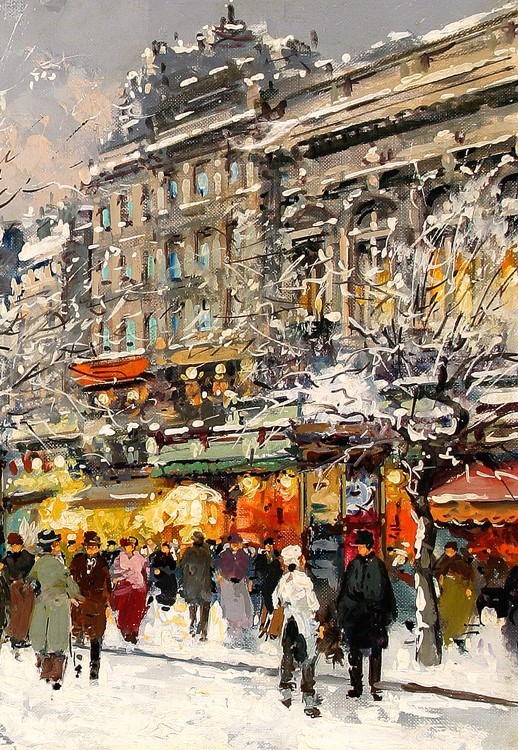

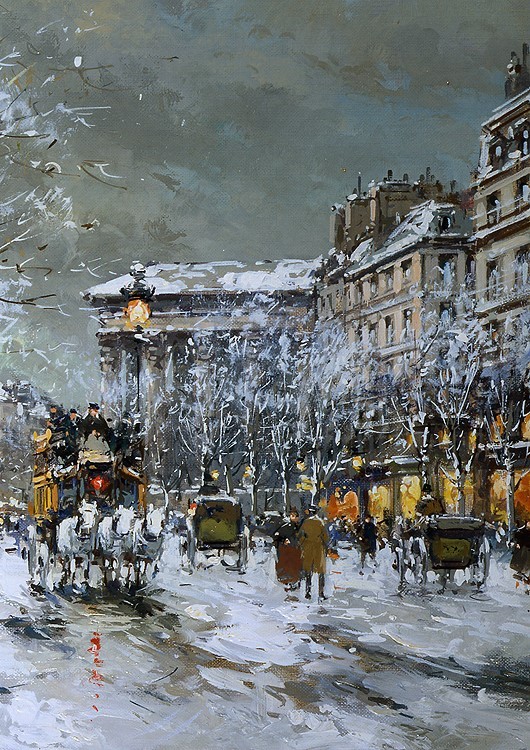


Antoine Blanchard | Theatre du Gymnase, Winter | Boulevard de la Madeleine, Winter | Place de la Madeleine, Winter |
#Antoine Blanchard#impressionism#cityscape#winter#france#paris#oil painting#oil on canvas#painting#art#20th century#20th century art#landmark#dark academia#light academia
1K notes
·
View notes
Text
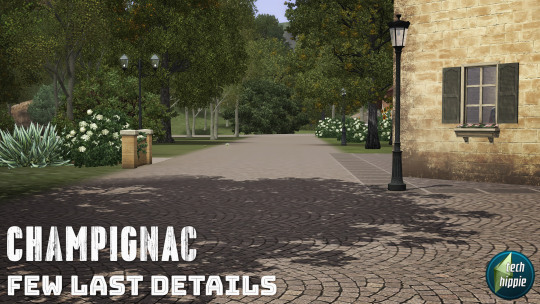
CHAMPIGNAC ... FEW LAST DETAILS :)
And of course, we have some mistakes in the links and in the cc content we are currently correcting ... What is a good Sims 3 World without a little headache ? :D And because we love difficulties, we are currently updating our own website ( which is a mess ) ... What else ? Nothing, everything is fine under the sun of this hot summer :D
The General Hospital is a Maxis one, but from Riverview. @nornities ( thanks A LOT for his/her patience to check Champignac ) pointed to us different things : missing mostly. so, somes of you may not see the Hospital ( Hopital des Bleuets ) in their game.
Bad links are currently corrected and both CC sims3packs folder and CC packages folder updated to include few missing stuff, including the Fresco Market items and the Skylight Studio roof elements we used + the Riverview Hospital :) HERE
The Open Swimming pool ( Champignac Bains Romains ) has lost its border texture ... don't worry : just replace with a one you like :)
The School is not the good one : too many missing stuff there, so we are currently uploading a new Champignac save game which should correct the little mistakes here and there HERE
Our Carpets Rabbit Holes folder had to be updated to get the Bistro RH : it is currently done ! But, you have to re-download the Rabbit Holes HERE
Our apologizes for this ! Really ... Anyway, we'll upload in the next hours a folder with ALL Community Lots and another one with ALL the residential Lots :) Just in case ... And here the 2 listings :

CHAMPIGNAC COMMUNITY LOTS
Small Park : Monticule funéraire oublié - Colline des Celtes Small Park : Petit Fleuriste Small Park : La Vieille Tour no1 Small Park : La Vieille Tour no2 Small Park : Place Olivier Magnolia Horse Training Grounds : Elevage Pégase Junkyard : Neo Casse Stadium : Football Club Fire Station : Pompiers Volants Pool : Piscine Municipale Pool : Bains Romains de Champignac Diner : Brasserie du Cercle Gym : Gymnase Club Visitor Allowed : Boulangerie DeNimes Elixir Shop : Boutique d’élixirs : Elixirs et Reliques Theatre : Théâtre & Opéra Cemetary : Cimetière Civil Hospital : Hôpital des Bleuets Bookstore : Le Kiosque no5 Library : Bibliothèque V. Hugo Café : Café Catane Military Base : Bureau des Armées Police Station : Police Municipale Grocery Store : Epicerie des Halles Market : Marché Bio City Hall : Nouvelle Mairie Art Gallery: Villa Medicis Fishing Spot : Lac des Collines Criminal Hideout : Cyber Crime Beach : La Petite Plage Gypsy Wagon : Oeil d’Irma Science Lab : Bio Sciences Supernatural Hangout : Taverne du Nain Business & Journalism : Centre d’Affaires Consignment Store : Boutique & Brocante Bistro : Bistro Gastronomie Nectary : Le Monastère School : Ecole Municipale Vampire Bar & Cocktail : Midnight Lounge

CHAMPIGNAC RESIDENTIAL LOTS
Maison Familiale : 1 double bed + 2 single bed Maison Bleu Indigo : 1 double bed Maison des Pensées : 2 double bed + 2 single bed Maison des Prés : 3 double bed + 1 single bed Maison Ensoleillée : 1 double bed + 1 single bed Maison des Colocs : 2 double bed Maison Élégante : 2 double bed + 2 single bed Maison Tournesol : 1 double bed + 1 single bed Maison Biscornue : 2 double bed + 1 single bed Maison des Haies : 1 double bed + 2 single bed Maison Neo Rustique : 1 double bed + 1 single bed Maison du Mardi : 1 double bed + 1 single bed Maison du Chanoine : 1 double bed + 1 single bed Maison de la Vieille Tour de Garde : 1 double bed Maison des Gardiens : 1 double bed + 1 single bed Maison des Roses : 1 double bed + 2 single bed Maison des Chardons : 1 double bed + 1 single bed Maison Nénuphars : 1 double bed + 1 single bed Maison du Bonjour : 1 double bed Maison en Coin : 1 double bed + 1 single bed Maison du Thym : 1 double bed + 2 single bed Maison Fougères : 1 double bed + 2 single bed Maison des Collines : 1 double bed + 1 single bed Maison du Coquelicot : 2 double bed Maison du Ginkgo : 1 double bed + 1 single bed Manoir Central : 2 double bed + 2 single bed Manoir Chapelle : 1 double bed + 1 single bed Mas des Vignes : 1 double bed + 1 single bed Ferme des Tortues : 2 double bed + 2 single bed Ancien Lavoir : 1 double bed + 2 single bed Ancienne Ferme : 1 double bed Intro de Qualité : 1 single bed Le Camp des Hippies : 1 double bed Le Bosquet de Gardenias : 1 double bed Champignac Starter no1 : 1 single bed Champignac Starter no2 : 1 single bed
We have carefully furnished all the houses of Champignac to avoid half empty houses when visiting your Sims friends in town but not too much to avoid useless weight ;)
Do you know the origin of the name Champignac ?
We'll ... Champignac is a village from Spirou & Fantasio which is one of the most popular classic Franco-Belgian comics. The series, which has been running since 1938, shares many characteristics with other European humorous adventure comics like The Adventures of Tintin and Asterix. It has been written and drawn by a succession of artists ... Spirou and Fantasio are the series' main characters, two adventurous journalists who run into fantastic adventures, aided by Spirou's pet squirrel Spip, the Marsipulami, and their inventor friend the Count of Champignac ... :D
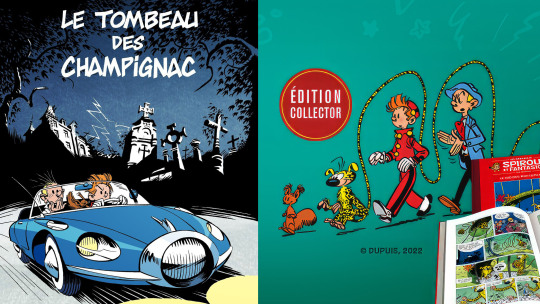
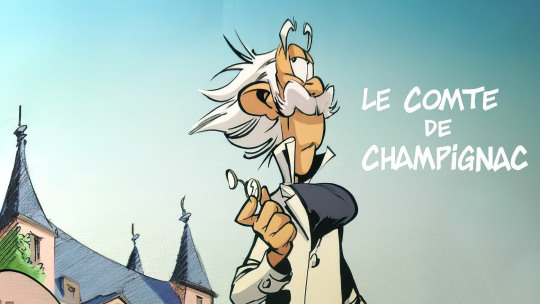
Once again, sorry for the inconvenient. All files should be ok now, and oh ! one last detail ... Have Fun ! \o/
Blackgryffin
#sims 3#sims 3 custom content#sims 3 worlds#sims 3 world#sims 3 cc#k hippie#sims 3 build#champignac#champs les sims#sims de nimes#custom content#community lot#residential lot#build mode#build
72 notes
·
View notes
Text
Images of Geneviève Lantelme -
According to Wikipedia "Geneviève Lantelme (born Mathilde Hortense Claire Fossey, 20 May 1883[1] – 24/25 July 1911) was a French stage actress, socialite, fashion icon, and courtesan. Considered by her contemporaries to be one of the most beautiful women of the Belle Epoque and bearing a resemblance to American actress Ethel Barrymore, she is remembered for the mysterious circumstances of her death: on the night of 24/25 July 1911, she fell from the yacht of her husband, Alfred Edwards."
1902 (May issue) Lantelme in Paquin, Les Modes May issue. From verbinina.wordpress.com/page/8/ 2106X3000.

1902 Geneviève Lantelme, Théâtre du Gymnase, photo by Reutlinger, Les Modes July 1902. From les-modes.tumblr.com/image/51225719455; fixed spots w Pshop 1280X1779.

Genevieve Lantelme in Doucet by Reutlinger. From tumblr.com/beautifulcentury859X1600.
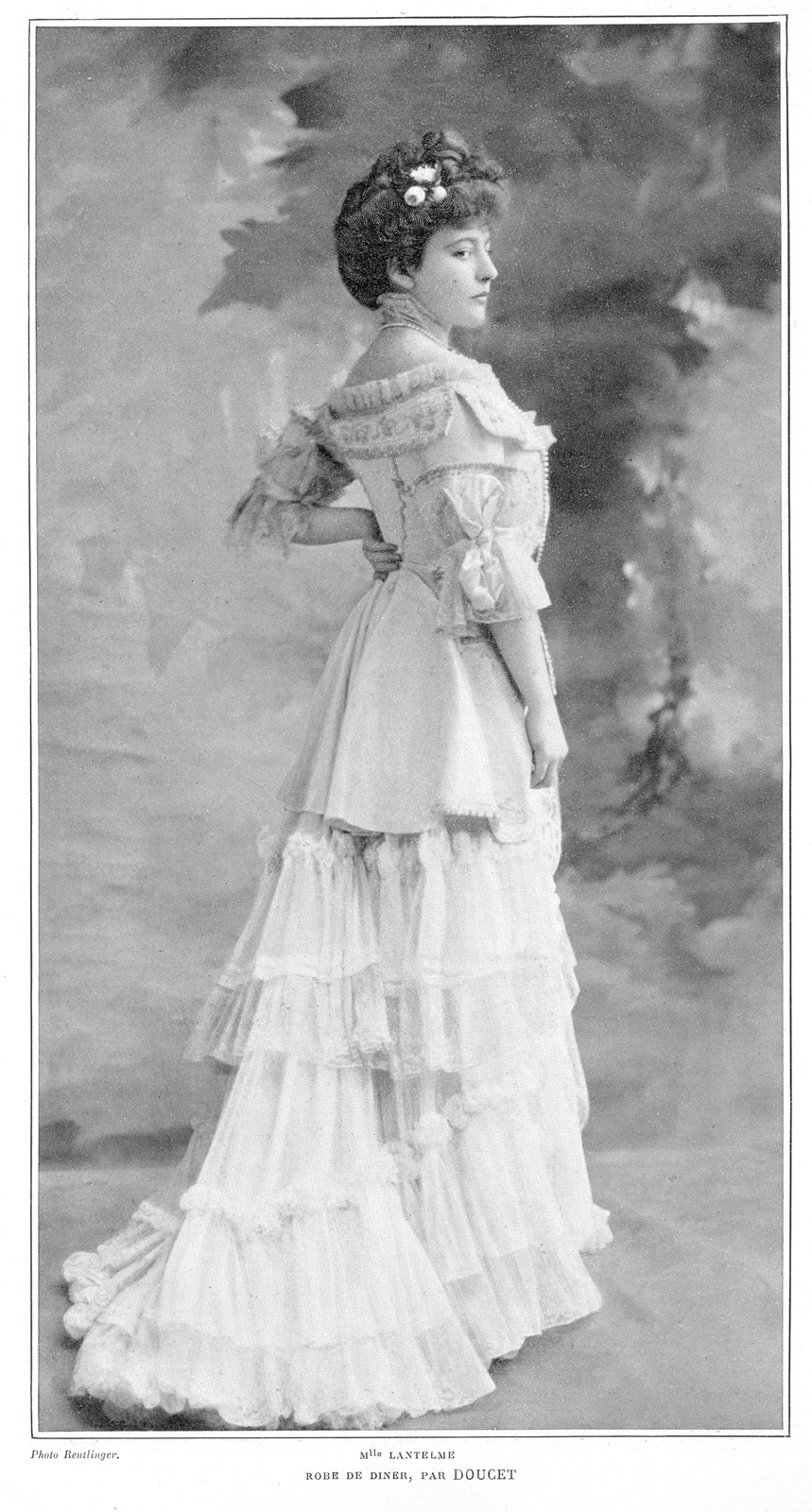
ca. 1905 Geneviève Lantelme by Henri Manuel. From Wikimedia 2283X2883.
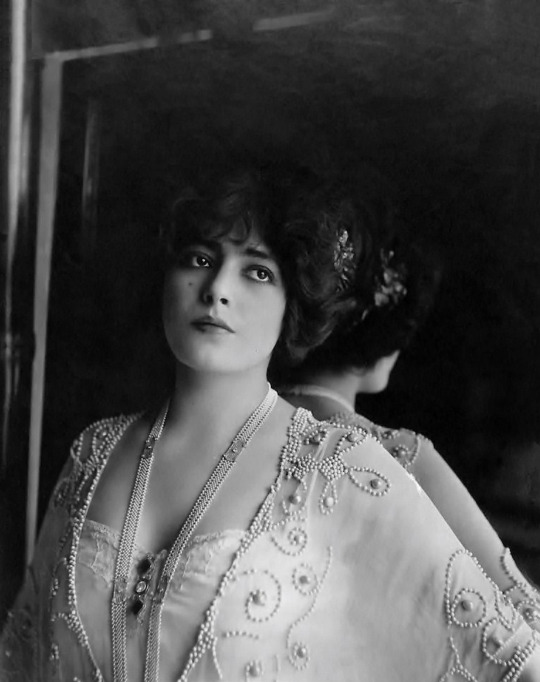
1907 Mademoiselle Lantelme by Giovanni Boldini (Galleria Nazionale d'Arte Moderna e Contemporanea - Roma, Italy). From Wikimedia 1474X2776.

1907 April Mlle. Lantelme of the Theatre Rejane with lace-trimmed celadon day dress, with pink roses and feathers in her red hair, wearing rings of white and black pearls, photographed by Paul Boyer, on cover of French periodical les Modes 853X1280.
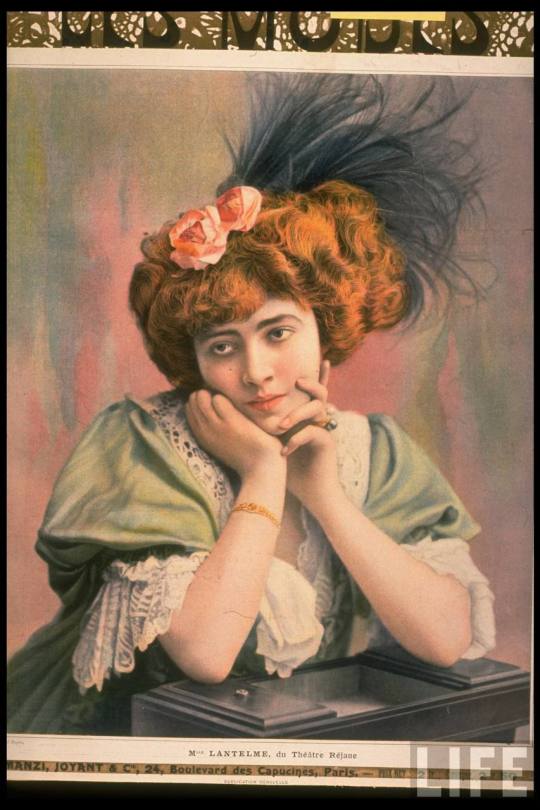
Lantelme in Paquin day dress by Félix. From verbinina.wordpress.com/page/6/ 1266X2806.

ca. 1908/1909 Lantelme in Vionnet gown by ?. From verbinina.wordpress.com/page/3/; fixed larger spots w Pshop 1280X1707.

1910 (June) Genviève Lantelme in Maison Drion-Régnier sheath evening dress, Les Modes - photo by Félix. From les-modes.tumblr.com/page/28 1280X1784.

1910 Geneviève Lantelme in Le Costaud des Epinettes by Abel Faivre (location ?). From Wikimedia 1190X1620.
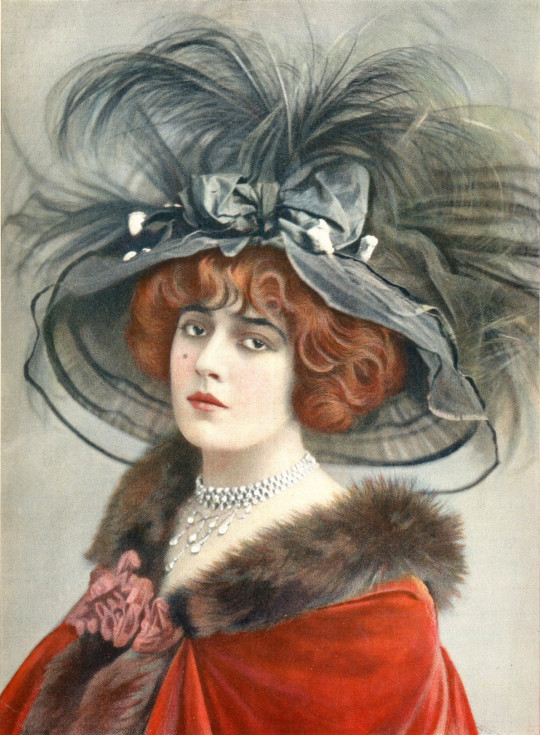
Lantelme in Paquin afternoon dress by Félix. From verbinina.wordpress.com/page/6/ 1789X2395.
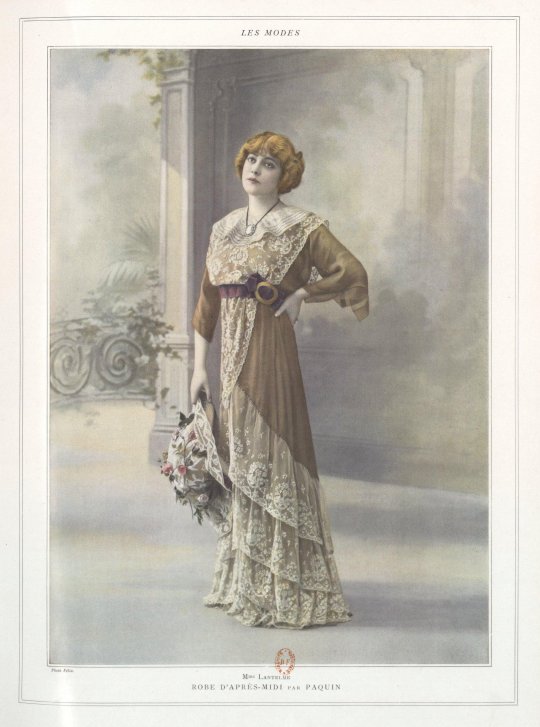
1910 Lantelme in Paquin photo Reutlinger. From verbinina.wordpress.com/page/6/ 2048X3060.
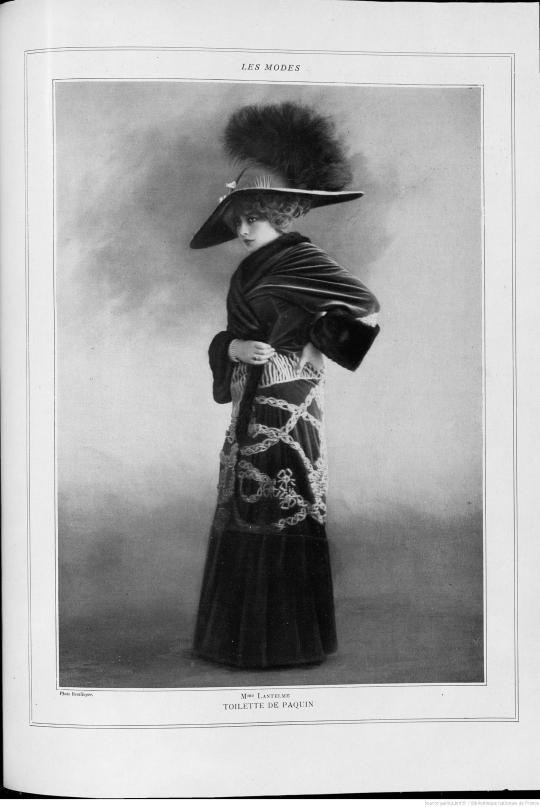
1911 Elegante et son chien (Lantelme with blue hortensias) by Antoon van Welie (location ?). From verbinina.wordpress.com/2015/03/06/an-unknown-portrait-of-lantelme/; doubled size 1600X1032.
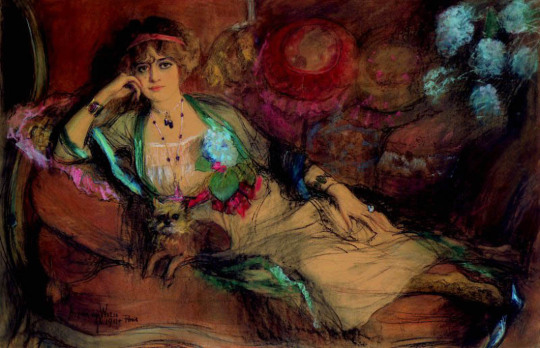
1911 Lantelme photo in 2 August 1911 issue of The Bystander. From verbinina.wordpress.com/page/2/; fixed spots w Pshop 815X1186.
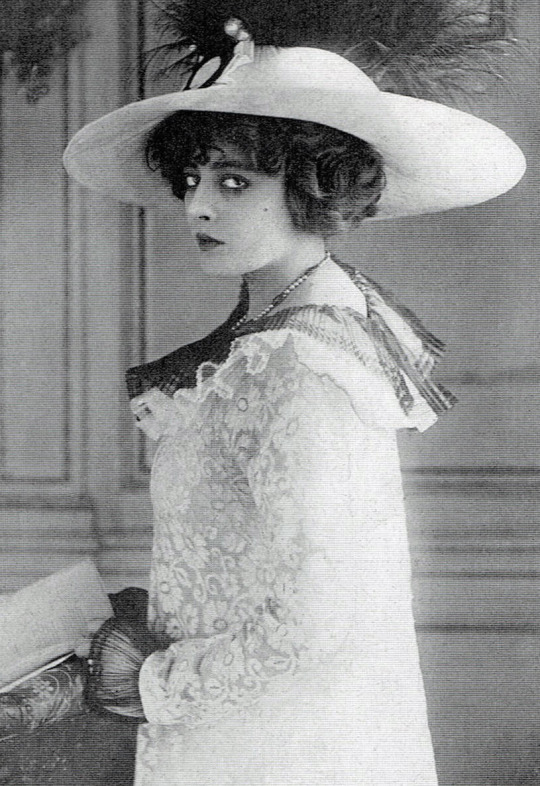
1911 Un Vendredi au Salon des Artistes français by Jules-Alexandre Grün (Musée des Beaux-Arts de Rouen - Rouen, Normandie, France). From verbinina.wordpress.com/page/7/; fixed spots & abrasion flaws w Pshop 4800X2800. Lantelme is at the visual center of this work.
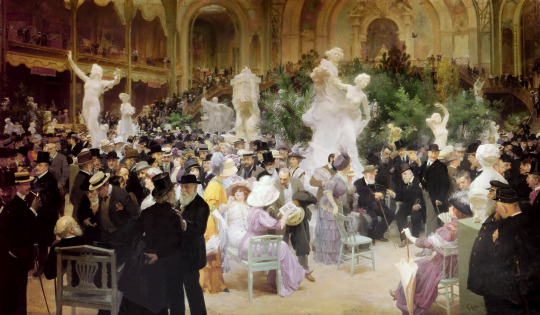
Lantelme and dogs by Reutlinger. From verbinina.files.wordpress.com/2015/06/lantelme-cabinet-photo-with-2-dogs; adjusted borders & fixed flaws w Pshop 1094X1594.

Lantelme in La Gamime wearing Paquin by Reutlinger. From verbinina.wordpress.com/page/6/ 1230X1636.
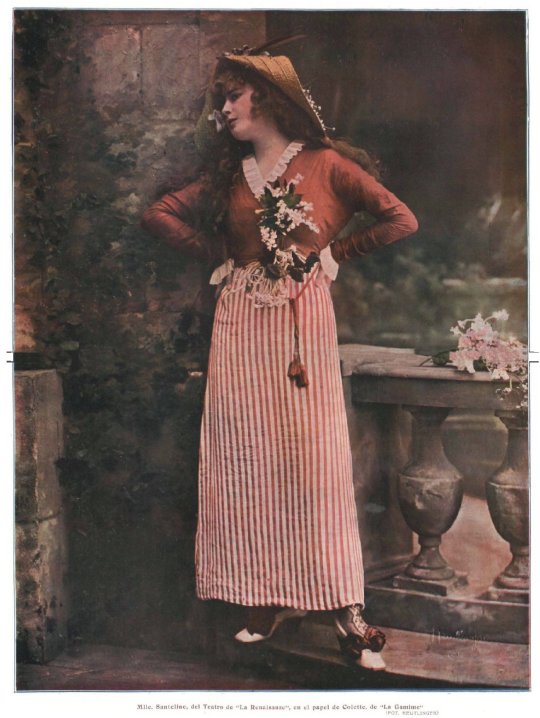
Lantelme in Paquin by Manue. From verbinina.wordpress.com/page/6/ 2197X3360.

Lantelme in Paquin. From verbinina.wordpress.com/page/6/ 1401X2000.

#Belle Époque fashion#1900s fashion#1910s fashion#Paquin#Jeanne Paquin#Jacques Doucet#Drion-Régnier#Madeleine Vionnet#Reutlinger#Félix#Giovanni Boldini#Abel Faivre#Manue#Antoon van Welie#Jules-Alexandre Grün
35 notes
·
View notes
Video
Polaire by Truus, Bob & Jan too! Via Flickr: French postcard by ND Phot., no. 30 Photo: H. Manuel. Caption: Polaire (Gymnase). French singer and actress Polaire (1874-1939) had a career in the entertainment industry which stretched from the early 1890s to the mid-1930s, and encompassed the range from music-hall singer to stage and film actress. Her most successful period professionally was from the mid-1890s to the beginning of the First World War. Polaire was a French singer and actress, born Émilie Marie Bouchaud on May 14, 1874 in Agha (Algeria). According to her memoirs she was one of eleven children of whom only four survived – and eventually only two, Émilie and her brother Edmond. When her father died of typhoid her mother temporarily placed the children under the care of Polaire’s grandmother in Algiers. In 1891, at age 17 she came to Paris to join her brother Edmond who performed there in the café-concerts under the name of Dufleuve. She had already sung in cafes in Algiers and continued on this path, eventually becoming a popular music-hall singer and dancer, performing e.g. the French version of Ta-ra-ra Boom-de-ay: Tha ma ra boum di hé - her greatest success, already from the start. She became a big name and was e.g. portrayed by Henri de Toulouse-Lautrec in the magazine Le Rire in 1895. Not only her singing and dancing qualities were remarkable, Polaire also distinguished herself by her particular physique, having an exceptional wasp waist, at a time when women tortured themselves with tight corsets to refine their waist. After a first failed attempt to conquer New York as singer, Polaire returned to Paris where she expanded her range with prose theatre as well. She managed to get the role of Claudine in Colette’s play Claudine à Paris, performed at the Bouffes-Parisiens in 1902 and again performed in the US in 1910. This time she was a big hit in the US and came back loaded with money. Her obtaining of the part of Claudine was not so easy, Polaire writes in her memoirs, as Willy at the time reclaimed the rights of Colette’s novels, and didn’t consider this music-hall singer as fit for this serious part. But a dashing and headstrong Polaire managed to convince Willy in person that she was Claudine, so she got the part. Claudine à Paris was performed some 120 times in France, with great success. Colette herself was very satisfied about the result. Willy even managed to exploit the success by a whole line of merchandising. Afterwards Polaire would consider him her substitute father. From 1909, Polaire appeared in several film roles. After two films at Pathé frères, Moines et guerriers (Nuns and warriors, Julien Clément) and La tournée des grand-ducs (The Grandduke’s Tour, Léonce Perret 1910) – in the latter she aptly played a dancer - she went to Germany to play a Cuban lady in Zouza (Reinhard Bruck, 1911), in which future film director Richard Oswald was one of her co-stars. Back in France she acted again at Pathé in Le visiteur (The Visitor, Albert Capellani, René Leprince, 1911), but she mostly was active at the Éclair film company between 1911 and 1914, starting with Le poison de l’humanité (The Poison of Humanity, Émile Chautard, Victorin Jasset, 1911). From 1912 to 1914 she did a series of six films with then young and upcoming film director Maurice Tourneur, working for Éclair: Les gaîtés de l'escadron (The Funny Regiment, 1913), based on the novel by Georges Courteline; Le dernier pardon (1913), a comedy written by Gyp; La dame de Monsoreau (1913), after Dumas père; Le Friquet (1914), after Gyp and with Polaire in the title role; Soeurette (The Sparrow, 1914); and the mystery film Monsieur Lecoq (1914), after Émile Gaboriau. Her copartners in these films were often Maurice de Féraudy, Charles Krauss, Henry Roussel and Renée Sylvaire. Le Friquet was restored by the Cinémathèque française in the mid-1990s and shown in international festivals It deals with a poor trapeze worker who loses her lover to a rich, immoral lady and then commits suicide during her trapeze act. It was based on a play Polaire had performed herself in 1904. NB IMDB mixes up things by not making a distinction between Polaire and Pauline Polaire. In the 1920s a younger actress named Giulietta Gozzi (1904-1986), niece of the Italian diva Hesperia (Olga Mambelli), performed under the name of Pauline Polaire in several Italian silent films with the forzuti such as Maciste and Saetta. Polaire became a wealthy lady with a house on the Champs-Elysées and a country house in the Var, Villa Claudine. Well into the 1920s she continued to gamble away huge fortunes. After World War I, Polaire dedicated herself primarily to the stage. During her career, she recorderd many of her songs as Tha ma ra boum di hé (her greatest success, already from the start), La Glu (based on a poem by Jean Richepin), Tchique tchique by Vincent Scotto, the telephone song Allo ! Chéri!, song with her partner Marjal, and she recited Charlotte prays to Our Lady by Jehan Rictus. Polaire died October 11, 1939 at age 65 in Champigny-sur-Marne (Val-de-Marne). "Mademoiselle Polaire" is cited by the Guinness Book of Records as co-holder (with the British Ethel Granger) of the thinnest waist of 33 cm. She herself says in her memoirs to have repeatedly circled her waist by a fake collar of the "normal size” of 41 or 42 cm. Polaire posed for various painters such as Antonio de La Gandara, Henri de Toulouse-Lautrec, Leonetto Cappiello, Rupert Carabin and John / Juan Sala. The latter became in 1893 the portraitist of Parisian society. His life-sized portrait of Polaire (1910) was auctioned at Drouot's in Paris on 28 June 2016. Sources: English, French and Dutch Wikipedia, IMDB, deesk.pagesperso-orange.fr/polaire-1900/c_polaire_biograp..., www.dutempsdescerisesauxfeuillesmortes.net/fiches_bio/pol....
#Polaire#Actress#French#Actrice#European#Film Star#Film#Cine#Kino#Cinema#Picture#Screen#Movie#Movies#Filmster#Star#Vintage#Postcard#Carte#Postale#Cartolina#Tarjet#Postal#Postkarte#Postkaart#Briefkarte#Briefkaart#Ansichtskarte#Ansichtkaart#Muet
1 note
·
View note
Text















Cabaret Cares / Allanah Star / Theatre du Gymnase / Paris
#paris#Cabaret Cares#Allanah Starr#Cabaret#Shams#Aides#Maud Amour#Le Filip#Martin Dust#Mimi#Julie Demont
1 note
·
View note
Photo

Théâtre du Gymnase Marie Bell, 38 boulevard de Bonne Nouvelle
Opened in 1820, the théâtre du Gymnase came to serve as a training-theatre for drama students. Early on, it had an exclusive contract to stage plays by the period's most successful playwright, Eugène Scribe. By mid-century, the theatre's playwrights included Balzac, Émile Augier, Georges Sand, Edmond About, Victorien Sardou, Octave Feuillet, Meilhac and Halévy, and Alexandre Dumas (both father and son). The tragic actress Marie Bell took over as the theatre's director from 1962 to 1985.
The theatre's mainspace seats 800, the Petit-Gymnase 160 and the studio Marie-Bell 90. The 2019-20 season includes Les Folies d’Offenbach (operetta), and Moliere's Dom Juan in the Petit Gymnase. I've not seen a play here, but one I translated - Le Voyage de M. Perrichon (Perrichon's Travels) - by Eugène Labiche, premiered there in 1860.
#théâtre#theatre#theater#Gymnase#10e arrondissement#Paris#Victorien Sardou#Moliere#Offenbach#Labiche
1 note
·
View note
Text










Geneviève Lantelme (1883-1911).
French actress and model.
.
She was a French stage actress, socialite, fashion icon, and courtesan. Considered by her contemporaries to be one of the most beautiful women of the Belle Epoque and bearing a resemblance to American actress Ethel Barrymore.
.
As a teenager, Mathilde (her real name) found protection in powerful men, including Henry Poidatz, banker and owner of Le Matin newspaper, whose mistress she became in her late teens.
With Poidatz’ backing, Mathilde, who wanted to become an actress, embarked on a stage career. She made her debut at the Théâtre du Gymnase in a comedy called La Bascule in 1901, in the tiny part of a housemaid, with a few lines of dialogue.
.
Several small parts followed, and in October 1903, Lantelme entered the Conservatoire de Paris to study acting. Lantelme completed her course of study without receiving any prizes or distinctions, as her comedic talent was not valued by her school or her teachers.
.
In 1905, Lantelme opened in a play called L’Age d’Aimer, whose leading role was played by the legendary actress Réjane. Upon hearing that her friend Alfred Edwards, a media tycoon and amateur playwright, had written a play named Par Ricochet and was looking for an actress, Réjane introduced him to Lantelme, who soon became his mistress.
In September 1906, Lantelme signed a contract with the Théâtre Réjane, but she broke it in January 1908 because she was frustrated that Réjane was given all of the leading roles. Réjane sued Lantelme for breach of contract and won; the young actress had to pay 20,000 francs in damages, an enormous sum at the time.
.
In 1908, she finally landed a leading role in a hit play, starring in Le Roi. As a result of her success, she graced the covers of magazines like Le Theatre, Les Modes, and Femina, and appeared on dozens of postcards.
During her short career in the limelight, Lantelme was photographed often and featured in newspapers and magazines in both Europe and the United States. Celebrated for her fashion sense as well as her beauty, she frequently collaborated with prominent French fashion designers of her day, to produce her memorable clothing ensembles.
.
From 1906 to 1909, Lantelme shared Edwards’ attentions with his fourth wife, Misia Sert. Misia was extremely jealous of her husband's mistress.
Eventually Lantelme won the battle for Edwards’ affections, and in July 1909, she and Edwards married.
.
In early July 1911, Lantelme, her husband Edwards, and a few of their friends boarded Edwards’ yacht, L’Aimée. On the night of July 24/25, Lantelme disappeared, and a few days later her body was discovered in the waters of the Rhine River. The official verdict was that the actress had drowned as the result of a tragic accident. However, many people speculated that Edwards had murdered his wife.
.
[Submission]
#Geneviève Lantelme#genevieve lantelme#belle epoque#early 20th century#1900s#french history#women in history#women history#Beauty#Actress#History#history crush#history hottie#history lesson#history buff#history nerd#history lover#history geek#historical crush#historical babes#historical hottie#historical figure#historical#historic#France#fashion history
87 notes
·
View notes
Text
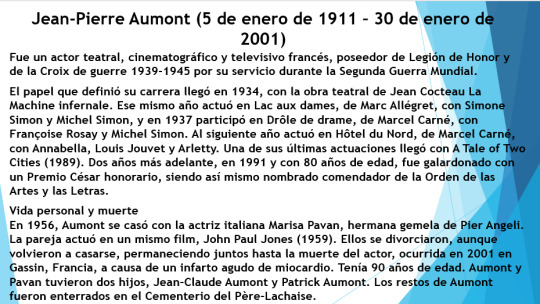


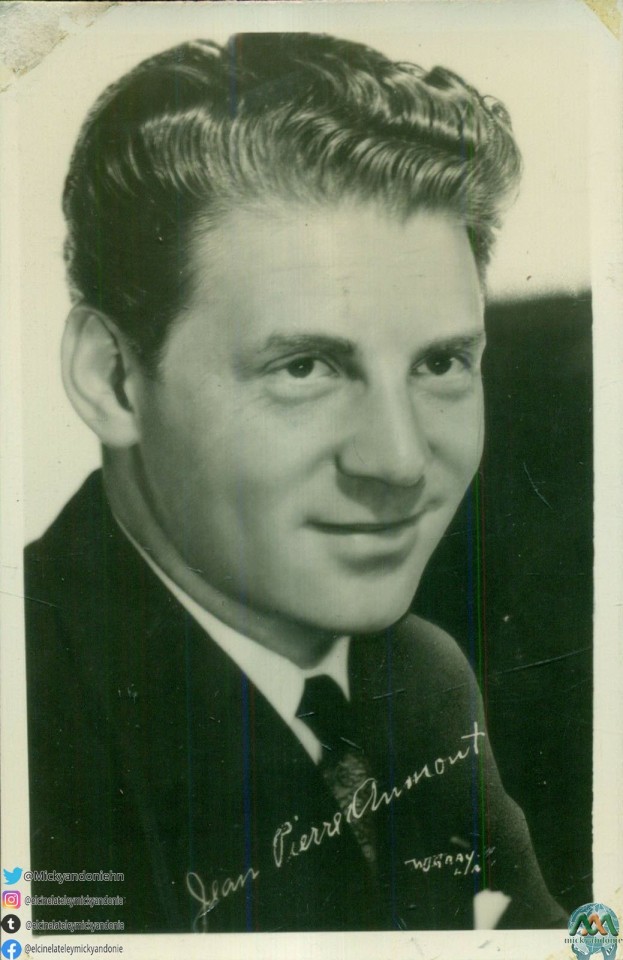
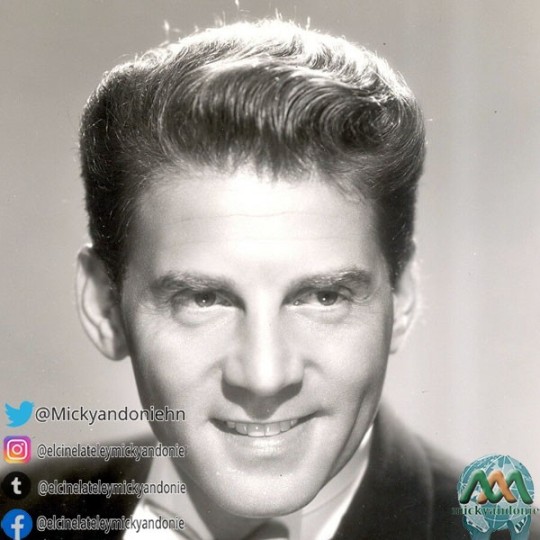

Jean-Pierre Aumont.
Filmografía
Cine
1931 : Jean de la Lune, de Jean Choux, con Michel Simon y Madeleine Renaud
1931 : Échec et mat, de Roger Goupillières
1932 : Faut-il les marier ?, de Pierre Billon y Karel Lamač
1933 : Dans les rues, de Victor Trivas
1933 : Un jour viendra, de Gerhard Lamprecht y Serge Véber
1933 : La Merveilleuse Tragédie de Lourdes, de Henri Fabert
1933 : Ève cherche un père, de Mario Bonnard
1934 : Lac aux dames, de Marc Allégret, con Simone Simon y Michel Simon
1934 : Le Voleur, de Maurice Tourneur, con Victor Francen
1934 : Maria Chapdelaine, de Julien Duvivier, con Madeleine Renaud y Jean Gabin
1935 : Les Yeux noirs, de Victor Tourjansky, con Harry Baur, Viviane Romance y Simone Simon
1935 : L'Équipage, de Anatole Litvak, con Annabella y Charles Vanel
1935 : Les Beaux Jours, de Marc Allégret, con Simone Simon y Raymond Rouleau
1936 : Tarass Boulba, de Alexis Granowsky, con Harry Baur y Danielle Darrieux
1936 : La Porte du large, de Marcel L'Herbier, con Victor Francen
1937 : Le Chemin de Rio, de Robert Siodmak, con Jules Berry y Suzy Prim
1937 : Drôle de drame ou L'étrange aventure de Docteur Molyneux, de Marcel Carné, con Louis Jouvet y Michel Simon
1937 : Le Messager, de Raymond Rouleau, con Jean Gabin y Gaby Morlay
1937 : Maman Colibri, de Jean Dréville
1937 : La Femme du bout du monde, de Jean Epstein, con Charles Vanel
1938 : Chéri-Bibi, de Léon Mathot, con Pierre Fresnay
1938 : Hôtel du Nord, de Marcel Carné, con Annabella, Louis Jouvet y Arletty
1938 : Le Paradis de Satan, de Félix Gandéra, con Pierre Renoir
1938 : Belle Étoile, de Jacques de Baroncelli, con Michel Simon
1939 : Le Déserteur, de Léonide Moguy
1939 : S.O.S. Sahara, de Jacques de Baroncelli, con Charles Vanel
1943 : Assignment in Brittany, de Jack Conway
1943 : The Cross of Lorraine, de Tay Garnett, con Gene Kelly
1944 : Croix de Lorraine en Italie, corto de François Villiers
1946 : Heartbeat, de Sam Wood, con Ginger Rogers
1947 : Song of Scheherazade, de Walter Reisch
1948 : The first gentleman, de Alberto Cavalcanti
1948 : Siren of Atlantis, de Arthur Ripley y Gregg G. Tallas, con Maria Montez
1949 : Hans le marin, de François Villiers, con Maria Montez y Lilli Palmer.
1949 : Golden Arrow, de Gordon Parry
1950 : La vie commence demain, documental de Nicole Vedrès
1950 : L'Homme de joie, de Gilles Grangier
1951 : L'Amant de paille, de Gilles Grangier
1951 : La vendetta del corsaro, de Primo Zeglio, con Maria Montez
1951 : Ultimo incontro, de Gianni Franciolini, con Alida Valli y Amedeo Nazzari
1951 : Hollywood sur Seine, corto de François Villiers
1952 : Les loups chassent la nuit, de Bernard Borderie
1953 : Moineaux de Paris, de Maurice Cloche
1953 : Lili, de Charles Walters, con Leslie Caron y Mel Ferrer
1953 : Kœnigsmark, de Solange Térac
1953 : Vedettes en pantoufles, corto de Jacques Guillon
1954 : Charge of the lancers, de William Castle, con Paulette Goddard
1954 : Si Versailles m'était conté..., de Sacha Guitry
1955 : Dix-huit heures d'escale, de René Jolivet, con Maria Mauban y Georges Marchal
1955 : Napoléon, de Sacha Guitry
1955 : Mademoiselle de Paris, de Walter Kapps
1956 : Hilda Crane, de Philip Dunne, con Jean Simmons
1957 : The seventh sin, de Ronald Neame
1959 : La Verte Moisson, de François Villiers
1959 : John Paul Jones, de John Farrow, con Robert Stack y Bette Davis
1960 : The Enemy general, de George Sherman, con Van Johnson yt Dany Carrel
1961 : Una americana en Buenos Aires, de George Cahan
1961 : El diablo a las cuatro, de Mervyn LeRoy, con Spencer Tracy y Frank Sinatra
1961 : Le Puits aux trois vérités, de François Villiers
1961 : L'Art de vivre, corto de Edouard Berne
1962 : Les Sept Péchés capitaux, episodio "L'Orgueil", con Marina Vlady y Samy Frey
1962 : Five miles to midnight, de Anatole Litvak, con Sophia Loren y Anthony Perkins
1962 : Una domenica d'estate, de Giulio Petroni
1962 : The horse without a head, de Don Chaffey
1962 : Socia de alcoba, de George Cahan
1963 : Vacances portugaises, de Pierre Kast
1965 : Il était une fois un tracteur, de Leopoldo Torre Nilsson
1967 : Blind man's bluff, de Edward Mann, con Boris Karloff
1969 : Castle keep, de Sydney Pollack, con Burt Lancaster
1970 : El coleccionista de cadáveres, de Santos Alcocer
1971 : L'Homme au cerveau greffé, de Jacques Doniol-Valcroze
1971 : Biribi, de Daniel Moosmann
1973 : La noche americana de Franço.
Televisión
1951 : Robert Montgomery Presents, episodio A christmas gift
1951 : Celanese Theatre, episodio No Time for Comedy
1952 : Goodyear Television Playhouse, episodio A Softness in the Wind
1952 : Studio One, episodio Letter from an Unknown Woman
1953 : The Philco Television Playhouse, episodio The Way of the Eagle
1953 : Lux Video Theatre
1954 : Lady Warner a disparu, de François Chatel
1954 : Studio 57, de Paul Landres
1955 : The Martha Raye Show
1956 : Climax!
1957 : Errol Flynn Theater, de Lawrence Huntington
1957 : Kraft Television Theatre
1958 : Playhouse 90
1960 : Letter to Loretta
1960 : So Help Me, Aphrodite
1960 : The United States Steel Hour
1963 : The Patty Duke Show
1963 : L'Affaire du cheval sans tête
1965 : The Nurses
1967 : Le comte Yoster a bien l'honneur, episodio "La troisième prophétie de l'ange de la mort"
1968 : Les Chevaliers du ciel, de François Villiers
1968 : The Name of the Game, episodio "The White Birch"
1969 : Au théâtre ce soir: Carlos et Marguerite de Jean Bernard-Luc, escenografía de Christian-Gérard, dirección de Pierre Sabbagh, Teatro Marigny
1970 : La Pomme de son œil, de François Villers
1972 : Comme il vous plaira, de Agnès Delarive
1972 : Joyeux Chagrins, de François Gir
1975 : Au théâtre ce soir: On croit rêver, de Jacques François, escenografía del auteur, dirección de Pierre Sabbagh, Teatro Edouard VII
1975 : N'oubliez pas que nous nous aimons, de Luc Godevais
1976 : Starsky y Hutch, de William Blinn, episodio "Murder at Sea"
1977 : Rendez-vous en noir, de Claude Grinberg
1978 : La Corde au cou, de Marcel Moussy
1979 : Paris-Vichy, de Anne Revel
1979 : Le Petit Théâtre d'Antenne 2: "La Belette", de Charles Vildrac
1979 : The Love Boat", 1 episodio
1979 : The French Atlantic Affair, de Douglas Heyes
1979 : Beggarman, voleur, de Lawrence Doheny
1980 : La Mémoire d'Eva Ryker, de Walter Grauman
1980 : Un temps pour les miracles, de Michael O'Herlihy
1981 : Carte Vermeil, de Alain Levent
1981 : Arcole ou la terre promise, de Marcel Moussy
1981 : Emmenez-moi au théâtre, "Le fleuve étincellant", de Charles Morgan
1982 : Hart to Hart, de Earl Bellamy
1983 : Quelques hommes de bonne volonté.
Teatro
Adaptación
1958 : Lucy Crown, de Irwin Shaw, escenografía de Pierre Dux, Théâtre de Paris
Autor
1959 : Ange le Bienheureux, escenografía de Jacques Charon, Théâtre des Célestins
Actor
1926 : Au grand large, de Sutton Vane, escenografía de Louis Jouvet, Théâtre des Champs-Élysées
1926 : Le Carrosse du Saint Sacrement, de Prosper Mérimée, escenografía de Louis Jouvet, Théâtre des Champs-Élysées
1930 : Le Prof d'anglais ou le système Puck, de Régis Gignoux, escenografía de Louis Jouvet, Théâtre des Champs-Élysées
1932 : La Pâtissière du village ou Madeleine, de Alfred Savoir, escenografía de Louis Jouvet, Théâtre Pigalle
1934 : Au grand large, de Sutton Vane, escenografía de Louis Jouvet, Théâtre des Champs-Élysées
1934 : La Machine infernale, de Jean Cocteau, escenografía de Louis Jouvet, Théâtre des Champs-Élysées
1936 : Le Cœur, de Henry Bernstein, Théâtre du Gymnase Marie-Bell
1937 : Famille, de Denys Amiel y Monique Amiel-Pétry, escenografía de Marcel André, Théâtre Saint-Georges
1939 : L'Amant de paille, de Marc-Gilbert Sauvajon y André Bost, escenografía de Jean Wall, Théâtre Michel
1944 : Une grande fille toute simple, de André Roussin, escenografía de Louis Ducreux, Théâtre des Ambassadeurs
1947 : L'Empereur de Chine, de Jean-Pierre Aumont, escenografía de Marcel Herrand, Théâtre des Mathurins
1949 : My Name Is Aquilon, a partir de L'Empereur de Chine, de Jean-Pierre Aumont, adaptación de Philip Barry, escenografía de Robert B. Sinclair, Lyceum Theatre (Nueva York)
1950 : Le Voyage, de Henry Bataille, escenografía de Henri Bernstein, Théâtre des Ambassadeurs
1953 : Les Pavés du ciel, de Albert Husson, escenografía de Christian-Gérard, Théâtre des Célestins
1954 : Carlos et Marguerite, de Jean Bernard-Luc, escenografía de Christian-Gérard, Théâtre de la Madeleine
1954 : Les Pavés du ciel, de Albert Husson, escenografía de Christian-Gérard, Comédie Caumartin
1955 : Il y a longtemps que je t'aime, de Jacques Deval, escenografía de Jean Le Poulain, Teatro Edouard VII
1955 : The Heavenly Twins, a partir de Les Pavés du ciel, de Albert Husson, escenografía de Cyril Ritchard, Booth Theatre
1956 : Amphitryon 38, de Jean.
1958 : L'Impromptu de Barentin, de André Maurois, Festival de Barentin
1959 : Ange le Bienheureux, de Jean-Pierre Aumont, escenografía de Jacques Charon, Théâtre des Célestins
1959 : Mon père avait raison, de Sacha Guitry, escenografía de André Roussin, Théâtre de la Madeleine
1960 : A Second Sting, de Lucienne Hill a partir de Colette, escenografía de Raymond Gérôme, Eugene O'Neill Theatre (Nueva York)
1962 : Flora, de Fabio Mauri y Franco Brusati, escenografía de Jules Dassin, Théâtre des Variétés
1963 : Tovarich, de Anne Croswell y Lee Pockriss, escenografía de Peter Glenville, Broadway Theatre, Winter Garden Theatre
1970 : Camino Real, de Tennessee Williams, escenografía de Milton Katselas, Vivian Beaumont Theatre (Nueva York)
1971 : Les Anges meurtriers, de Conor Cruise O'Brien, escenografía de Joan Littlewood, Théâtre de Chaillot
1971 : Murderous Angels, de Conor Cruise O'Brien, escenografía de Gordon Davidson, Playhouse Theatre (Nueva York)
1972 : Nous irons à Valparaiso, de Marcel Achard, escenografía de Jacques-Henri Duval, Théâtre des Célestins, Giras Herbert-Karsenty
1975 : Des journées entières dans les arbres, de Marguerite Duras, escenografía de Jean-Louis Barrault, Théâtre d'Orsay
1976 : Des journées entières dans les arbres, de Marguerite Duras, escenografía de Jean-Louis Barrault, Ambassadors Theatre (Nueva York)
1981 : A Talent for Murder, de Jerome Chodorov y Norman Panama, escenografía de Paul Aaron, Teatro Biltmore (Nueva York)
1982 : Coup de soleil, de Marcel Mithois, escenografía de Jacques Rosny, Théâtre Antoine
1984 : Pense à l’Afrique, a partir de Think of Africa, de Gordon Dryland, escenografía de Jean-Pierre Granval, Théâtre Renaud-Barrault.
Créditos: Tomado de Wikipedia
https://es.wikipedia.org/wiki/Jean-Pierre_Aumont
#HONDURASQUEDATEENCASA
#ELCINELATELEYMICKYANDONIE
5 notes
·
View notes
Photo



Scarlett Johansson during the Yummy Pop Grand Opening Party at Theatre du Gymnase in Paris (2016)
5 notes
·
View notes
Text
The History of Faust The Opera by Charles François Gounod
In the matter of the libretto of "Faust" Gounod was fortunate in finding a coadjutor in M. Jules Barbier, one of the most fertile of French dramatic authors. Meeting Gounod one day, Barbier confided to him that he wished to make an opera libretto out of "Faust." Gounod jumped at an idea which he had himself secretly cherished for years, and the collaboration was arranged there and then. Barbier proceeded to discuss the plan with his friend and habitual co-worker, M. Carré, who, curiously enough, had just had a small piece called Faust et Marguerite acted at the Gymnase. On this work Carré had probably expended all the courage he possessed. At any rate he accepted with the greatest stolidity the notion which already fired Barbier and Gounod with such enthusiasm. The plot, he said, was worn out; it was too vast; it was not theatrical enough; and so on. Still, though he had no faith in the project, he would take his usual share of the collaboration. As it turned out, Carré’s share was very limited -- just enough, in fact, to enable him to claim to have his name connected with the immortal work. At the end of the year the opera was finished.
Marie Caroline Miolan-Carvalho as Marguerite in Gounod's opera, Faust (1860)
Now came the question of finding a manager who would produce it. One after another was tried in vain. Roqueplan, described as the most Parisian, the shrewdest of business men, would have nothing to do with the work. The plot, he averred, was out of date. Imagine a theme of such human interest being ever out of date! Alphonse Reyer succeeded Roqueplan at the Imperial Academy of Music, and to him the manuscript was next submitted. "Not stagey enough," he exclaimed; and again "Faust" went on its travels. At last the manager of the Théâtre Lyrique decided to give the almost despairing artists a chance. Gounod’s score pleased him, he was good enough to say. But, alas! the long-deferred hope was still further deferred. A "Faust" by Dennery intervened, and delayed Gounod’s opera for a whole year. When at length the work was put in rehearsal, it was only to encounter fresh vicissitudes. For many months, as we read in Marie de Bovet’s "Life of Gounod," the two librettists, the composer, and the manager, M. Carvalho, met in the latter’s office, and strange scenes were exacted sometimes until far into the night. Carvalho was capricious, and day after day altered his mind about this or that. Carré, doubtful of success as he had been from the first, yielded weakly to every whim. Gounod protested, pleaded, threatened, and then yielded too, mainly out of deference to his nervous system, which always got excited by these encounters. Barbier alone held out -- fought inch by inch to maintain the integrity of his work. But for him these "epic battles" in the manager’s office might have resulted in a "Faust" very different from that which was finally brought to the test of a public interpretation on the 19th of March 1859. It is told, indeed, that poor Barbier was so prostrated by the wranglings at these nocturnal sittings and by the worries of the rehearsals that he was unable to be present when the great night arrived. And what, then, was the immediate fate of a work which had involved so much preliminary toil and anxiety? Did Fortune smile on "Faust" that spring night? Alas! its hour of triumph was not yet come. "Decidedly the devil does not bring luck to M. Gounod," was the significant observation of a cynical "first-nighter." To say that the opera was a failure would be an exaggeration, but it certainly was not appreciated as it afterwards came to be appreciated. Scudo, of the Revue des Deux Mondes, prince of music critics, said it had only a waltz and a chorus; Berlioz (but then he was jealous) declared that the composer had not the smallest conception of the subject he sought to treat! A certain Martin d’Angers, thundering in a musical journal, concluded his notice with the hope that Gounod would never repeat the experiment. It was unlikely; masterpieces are not often duplicated. As for the public attitude, that can best be expressed by saying it was not hostile but hesitating. "The most contradictory feelings," writes one, "were manifested with regard to the new work, and opposing tides of opinion stemmed the regular current in one direction or the other." There was no enthusiasm. The Parisians went to the Théâtre Lyrique, but receipts were uncertain and success was slow. Manager Carvalho, convinced of the final triumph of the opera, perseveringly pushed it on to a fifty-seventh performance, at which point he failed and the theatre was closed -- a result the import of which does not require to be emphasised. Meanwhile, the composer had been trying to find a publisher for his score. But the publishers, like the managers, were shy. Nay, they shunned "Faust" as if it were the devil in propriâ personâ. Heugel wanted to print it, declaring that the waltz alone would cover the expense; but Heugel had a partner, and he decided that the firm could not publish a failure. It seemed as if Gounod and his librettists must undertake the printing at their own cost. They had, in fact, almost decided upon that course when the score was shown to one M. Choudens, who had just started business. Choudens resolved to risk all his capital on it. He bought "Faust" for 10,000 francs, and laid the foundation of the fortunes of his house. Rarely, indeed, has so hazardous an experiment met with so rich a reward. "Faust" has proved a veritable gold mine for the publishers and impresarios alike. In thirty years from the date of Choudens’ bold venture, the modest sum he so timidly advanced brought him in nearly three millions of francs, representing an investment at a thousand per cent. The English publishing right, it may be added, is conserved; but, happily for the popularity of the opera, the performing rights in England were lost to the composer. In this connection, a word or two may be said about the first performance of "Faust" in England. It was at Her Majesty’s Theatre on June 12, 1863, and such was the dubiety as to the success of the opera even then that Messrs. Chappell, who had secured the publishing rights in this country for the ridiculous sum of £30 (curiously enough, Gounod received from Messrs. Boosey £800 for his next opera, "Mireille," which was never a success), had to pay Mr. Mapleson £500 to induce him to stage it! The story is succinctly told in both Mr. Kuhe’s and Signor Arditi’s "Reminiscences." In our days, as Mr. Kuhe observes, whenever, through unforeseen circumstances, it is necessary to substitute for the opera to be performed on a certain evening some other work, the choice of a manager generally lies between "Faust" and "Carmen." In either case he feels that the disappointment of the audience will vanish as soon as the ear is greeted by the strains of Gounod or Bizet. But bold indeed would have been accounted the prophet foretelling in 1863 a success so enduring as that which has fallen to Gounod’s great work. London gave by no means a favourable reception to the opera, though there was a very strong cast, including Titiens, Trebelli, Giuglini, and Santley. Signor Arditi, who was then conductor at Her Majesty’s, tells how his orchestra cared so little for the music that he had to encourage them to persevere by the assurance that they would be delighted with it on a more intimate acquaintance. At the performance nothing seemed to take the fancy of the audience but the old men’s and the Soldiers’ Chorus and the tenor air "Salve Dimora." Signor Schira, who had just had an opera of his own produced at Her Majesty’s, was present, and at one part stopped his ears with his hands, exclaiming aloud: "That is execrable. It reminds me of a couple of cats squabbling on the tiles." At the second representation the audience were mush less frigid; at the third the turning point on the road to success was reached. Still, the work had many enemies, and encountered a great deal of opposition and unmerited abuse. We have Arditi’s word for it that although it was constantly repeated, it was not a financial success during the first year. In the following year, 1864, pay and popularity joined hands in a grip that has "held" ever since. Mario, the great tenor, then figures in the title-rôle -- in appearance and as an actor an ideal Faust, though vocally Faust was never one of his peerless parts. Probably the very best Faust yet seen, from the point of view of personal appearance as well as vocally and dramatically, is Jean de Reszke, though Nicolini was also superb in the part. Towards the end of the 1864 season Madame Patti appeared as the heroine, when for the first time was heard a Margaret such as Gounod might have dreamed of -- perfection of voice, singing, and acting being in the great diva personified. "What a feast it was," exclaims the veteran Kuhe, "to hear the Jewel Song given at length with matchless excellence, and to see associated with the singer such a Faust as Mario looked!" A few years later London opera-goers were sent into raptures by the appearance as Margaret of Christine Nilsson -- in looks an ideal Gretchen such as any student of Goethe might picture, and in dramatic intensity equal to any artist who had previously been seen in the rôle. The Margaret of the 1863 London production was, as has been indicated, the famous Titiens, but it was impossible to reconcile her tall and massive figure with the girlishness of an ideal Gretchen, though it is said that her singing of the passionate music in the church scene and final trio has never been surpassed. In the Paris production of 1859 the Gretchen was Mme. Carvalho, the manager’s wife. Her voice was described as "a thin, shrill soprano, as slender as her person, cut in two by three or four hasty notes -- a regular bird pipe." The Jewel Song is often said to have been written expressly for her, but this is untrue. It was with reluctance that she agreed to sing it, dreading lest her personal success might not sufficiently compensate for the strain on her voice. Ultimately she conquered the natural defects of her voice until Gounod wrote of "that marvellous style and power of execution which have set her in the highest place among contemporary singers."
1 note
·
View note
Photo

ABOUT LAST NIGHT...RÉPÉTITION GÉNÉRALE.... « JE NE SUIS PAS NARCISSIQUE »... ALAIN KLINGLER....THÉÂTRE DU GYMNASE....FESTIVAL D’AVIGNON...JUILLET 2019.... Photo: Hélène Singer #theatre #festivaldavignon #avignon #avignonoff #actress #lifeonstage https://www.instagram.com/p/By2VLFcCgLL/?igshid=1escypn9x6sfw
1 note
·
View note
Video
youtube
URBEX Guy Clément LE THEATRE DE L'HOPITAL VIDEO / L'hôpital a été construit en 1937 pour soigner les soldats malades et blessés qui devaient bientôt aller au front (650 personnes, 240 mètres de long) Après la défaite Nazi, les Russe prennent l'Hôpital. qui servirent les soldats et leurs familles du groupe nord de l'armée soviétique. Le complexe comprenait une salle de dissection, une immense piscine sportive , un cinéma, des magasins, des gymnases et de nombreuses autres installations. Les Russes ont occupé l'installation jusqu'en 1993 puis à leur départ il fut abandonné. The hospital was built in 1937 to treat sick and wounded soldiers who were soon to go to the front (650 people, 240 meters long) After the Nazi defeat, the Russians took the hospital. who served the soldiers and their families of the northern group of the Soviet army. The complex included a dissection room, a huge sports pool, a cinema, shops, gyms and many other facilities. The Russians occupied the facility until 1993 when it was abandoned. Das Krankenhaus wurde 1937 gebaut, um die kranken und verwundeten Soldaten zu versorgen, die bald an die Front gehen sollten (650 Personen, 240 Meter lang) Nach der Niederlage der Nazis eroberten die Russen das Krankenhaus. Sie dienten den Soldaten und ihren Familien der Nordgruppe der sowjetischen Armee. Der Komplex bestand aus einem Sezierraum, einem riesigen Sportpool, einem Kino, Geschäften, Fitnessstudios und vielen anderen Einrichtungen. Die Russen besetzten die Anlage bis 1993 und nach ihrer Abreise wurde sie aufgegeben. Szpital został wybudowany w 1937 r. w celu leczenia chorych i rannych żołnierzy, którzy wkrótce wyszli na front (650 osób, 240 metrów długości) po klęsce nazistowskiej, Rosjanie wzięli do szpitala, który służył żołnierzy i ich rodzinach północnej grupy wojska radzieckiego. Kompleks obejmował pokój dysekcji, ogromny basen sportowy, kino, sklepy, siłownie i wiele innych obiektów. Rosjanie zajmowali ten obiekt do 1993 roku, kiedy został porzucony. El hospital fue construido en 1937 para curar a los soldados enfermos y heridos que pronto iban al frente (650 personas, 240 metros de largo) Después de la derrota nazi, los rusos tomaron el Hospital. que sirvieron a los soldados y sus familias del grupo norte del ejército soviético. El complejo incluía una sala de disección, una enorme piscina deportiva , un cine, tiendas, gimnasios y muchas otras instalaciones. Los rusos ocuparon la instalación hasta 1993 y luego a su salida fue abandonado. L'ospedale fu costruito nel 1937 per curare i soldati malati e feriti che dovevano presto andare al fronte (650 persone, 240 metri di lunghezza) Dopo la sconfitta nazista, i russi presero l'ospedale. Che servirono i soldati e le loro famiglie del gruppo nord dell'esercito sovietico. Il complesso comprendeva una sala dissezione, un'enorme piscina sportiva , un cinema, negozi, palestre e molte altre strutture. I russi occuparono l'impianto fino al 1993 e alla loro partenza fu abbandonato. Госпиталь был построен в 1937 году для лечения больных и раненых солдат, которые вскоре должны были отправиться на фронт (650 человек, 240 метров в длину) После поражения нацистов, русские взяли госпиталь. Они служили солдатам и их семьям из северной группы Советской Армии. Комплекс включал в себя комнату для вскрытия, огромный спортивный бассейн, кинотеатр, магазины, спортивные залы и многие другие объекты. Русские занимали объект до 1993 года, когда он был заброшен. Retrouvez-moi sur les réseaux / Follow me for daily content: 👍 Facebook: Urbex Guy Clement https://www.facebook.com/profile.php?... 👉 Youtube URBEX Guy Clément https://www.youtube.com/channel/UCNhQ... 📸 Instagram: @abandoned.urbex.world https://www.instagram.com/abandoned.u... 🎵TikTok: @urbexguyclement https://www.tiktok.com/@urbexguycleme... 🐦Twitter: @GuyPellegrin https://twitter.com/GuyPellegrin Instagram 👉👉 @abandoned.urbex.world Facebook 👉👉 URBEX Guy Clément Youtube 👉👉 https://www.youtube.com/channel/UCNhQ... "Write your past, your present is over"- "Ecrivez votre passé, votre présent est fini" BIENVENUE sur ma chaîne URBEX Guy Clément. Je suis un explorateur passionné de voyages et d'urbex. Je publie sur ma chaîne toutes mes explorations : des plus classiques aux plus insolites et parfois même incroyables. N'hésitez pas à laisser des commentaires pour me dire ce que vous avez aimé et vos suggestions. Vous pouvez vous abonner à ma chaîne pour être informés en priorité de mes dernières explorations. #amazing #abandoned #urbex
0 notes
Photo

Paris 1988, Théâtre du Gymnase, Roman Polanski before his performance in Franz Kafka's 'Metamorphosis'. Photo by Philippe Marchand.
#Roman Polanski#Philippe Marchand#roman by philippe marchand#la metamorphose#metamorphosis#kafka#franz kafka#1988#80s#paris#theatre#Théâtre du Gymnase#stephen berkoff#behind the scenes
0 notes
Text
1908 (September) Les Modes - Mme Marthe Régnier dans "Madame Flirt" au Theatre du Gymnase - Robe du soir par Martial & Armand - photo by Reutlinger. From gallica.bnf.fr; fixed spots & flaws w Pshop 1515X2153.

#1908 fashion#1900s fashion#Belle Époque fashion#Marthe Régnier#Martial & Armand#Reutlinger#evening dress#head band#mantlet#bateau décolletage#elbow length sleeves#close skirt
6 notes
·
View notes
